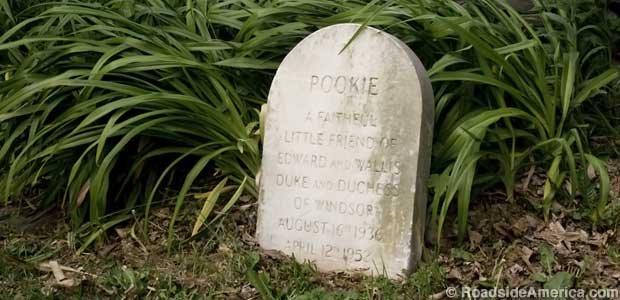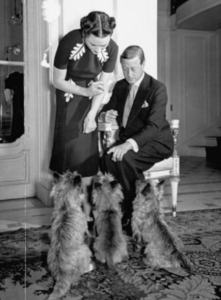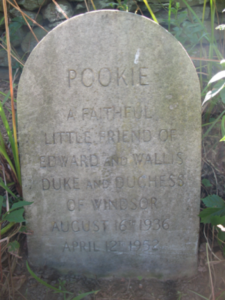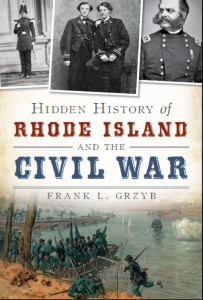Nobody seemed to know exactly where and when she died, but on a chilly Saturday, April 12, 1952, a day before Easter Sunday, the death was officially announced by the grieving family while vacationing in the City by the Sea (Newport, Rhode Island). In four months, the deceased would have been sixteen-years old. Her death did not come as a shock. In equivalent dog-years, Pookie was in her seventies. Born in Austria, the cream-colored female Cairn terrier had lived a long, comfortable and luxurious lifestyle among many canine companions to frolic with while receiving constant attention from a contingent of caregivers who were at her beck and call twenty-four hours a day. Living her entire life with the rich and famous, she ate specially prepared meals in silver serving bowls while her quarters back at home consisted of an immaculate apartment within a stone castle. You see, Pookie wasn’t just any ordinary dog. She was special; not because of her breed but because she was owned by Edward and Wallis Simpson, the Duke and Duchess of Windsor.
The former Prince of Wales and later King Edward VIII of Great Britain abdicated his throne in December 1936 after serving less than a year to marry a twice-divorced American socialite named Wallis Simpson. The titillating affair had been simmering behind the scenes since the January of 1934. When the affair came to light, the resultant scandal caused considerable embarrassment to the Royal Family. Wallis, a beautiful and highly intelligent woman, was also viewed as a female with a questionable reputation. She had divorced her first husband and while still married to her second, Edward Simpson, Wallis became the mistress of Edward then Prince of Wales, the subsequent heir to the throne. The affair and Wallis’s reputation tarnished the polished image of the Royal Family and precipitated a political crisis at home. In the end, the king was left with only two options: retain the crown and sever his romance with his mistress or abdicate the throne in order to marry the woman he loved. Edward chose the latter.
Edward’s brother, next in line for the throne, was swiftly and ceremonially coroneted as King George VI. Now it was up to the new monarch to save some dignity for his older brother and the Royal Family. In light of all the facts, the best solution was for King George VI to bestow upon his brother Edward the title, Duke of Windsor.
Six months after the abdication, the former king married Wallis. She would be known henceforth as the Duchess of Windsor. But instead of gaining the honor of being addressed as “Your Royal Highness,” she would be called “Her Grace.” The marriage, for all intent and purposes, exiled the duke from Great Britain.
The duke and duchess lived flamboyant lifestyles for several decades in Europe (predominantly in France) and the United States while experiencing the life of social celebrities. The press and the public were captivated by their charisma and the legacy of “the rich and famous” they fashioned as jetsetters. The duke relished his role in high-society and was a fashion trendsetter to the point of going a tad overboard with his quirky mix of plaids and stripes. He also savored a good party. The duchess was no exception. She adored her life of relaxation and played the role of a jetsetter without reservation. Though some believed there was marital dissention on the part of Wallis, there was little credible evidence to substantiate the rumors.
The Duke and Duchess, apparently doing their duty to promote the war effort, visited Newport in September of 1943 and took a special review of the sailors at the Naval Training Station. Marked by a “large turnout,” according to the Newport Daily News edition of September 17, 1943, the former king and his wife were the “house guests of Mrs. Duncan Douglas at Cairngorn Lodge on Bellevue Avenue” and two days later were the honored dinner guests of “Mrs. Cornelius Vanderbilt at Beaulieu.”
As the years passed, the royal couple became good friends with U.S. financier and industrialist Robert R. Young who maintained a multimillion dollar estate known as Fairholme in Newport. It was here and at such estates on Aquidneck Island where the duke and duchess vacationed while taking in luncheons, teas, and dinners, and later attending late night parties with their high-society friends. The duke also enjoyed playing golf at Newport Country Club; the duchess favored shopping at boutiques along the fashionable Bellevue Avenue. She also enjoyed walks on and near Ocean Drive and taking in the ambiance at the very private Bailey’s Beach.
Then there was their passion – some say obsession — for canines. Their first dogs were Cairn terriers carrying names like Slipper (aka; Mr. Loo), Cande, Pookie, Detto, and Prisie but by the early fifties the royals became enamored of pugs. As one butler explained, the dogs “were the children they never had.” Anne Sebba, in her biography of Wallis Simpson, wrote that the dogs “were often literally spoon-fed from silver bowls by the Duke or Duchess meals that had been especially prepared for them.” It was said that the duke himself dished out the food into the dogs’ pans and fed his terriers. In an age when bringing pets to social gatherings was frowned upon, the duke and duchess never thought twice about having their prized possessions tag along. When the duke and duchess travelled and vacationed – which was often — the pampered canines were sure to follow along with a small entourage of caregivers.
Though it seems inconceivable, the owners, justifiably prim and proper never bothered to have their dogs house trained. During the mornings and afternoons, the servants were kept busy cleaning up after the animals. At night the dogs slept on top of the bed that had been covered by plastic sheets to protect the satin quilt from soiling.
But now, Pookie, who had been vacationing with her owners at a Newport, Rhode Island, villa, had died. She had lived a carefree life reminiscent of a well-loved but spoiled adolescent. Soon a difficult decision had to be made: what to do with Pookie’s earthly remains? Though details are sketchy, it appears the duke and duchess agreed to have their pet cremated and buried at a local kennel known at the time as Potts Canine Country Boarding Kennel. Situated just off Wapping Road in a rural section of Portsmouth close to the Middletown border, Pookie was laid to rest near a stone wall that dated back to the mid-1800s. Eventually, a small monument was placed at the site to mark the interment. Surprisingly, the stone was no more elaborate than others in the cemetery; a far cry from her owners’ lavish lifestyle. It says:
POOKIE
A FAITHFUL
LITTLE FRIEND OF
EDWARD AND WALLIS
DUKE AND DUCHESS
OF WINDSOR
AUGUST 16TH, 1936
APRIL 12TH, 1952
Reportedly the duke and duchess visited the gravesite at least once over the years before the kennel and the cemetery were unceremoniously abandoned after the owner relocated to another facility.
Over the ensuing years the cemetery was overtaken by high weeds and scraggly brush and, thus, hardly recognizable as an animal cemetery that contained an estimated 1,000 pet burials. Today, the land is in the hands of real estate developers whose plans are to subdivide two lots into three while using the former grounds of the kennel and cemetery where three single-family homes are planned for construction. According to the Zoning Board of Review meeting minutes of July 17, 2014, the developers requested a variance to the frontage requirements from the town to allow for the building of the new homes. The board did not approve the variance request at the time, and the Planning Board was asked to look into the matter and either approve or disapprove the petition.
At some point, the abandoned and badly deteriorating kennel was torn down. The cemetery headstones were subsequently removed by developers who made every attempt to locate those whose pets were interred on the grounds (advertisements were placed in newspapers offering the stones to former owners). An attorney from the Chicago Title Insurance Company emailed one party in the matter that a pet cemetery does not have similar rights to those of a cemetery for humans. Thus, all indications are that the pet remains, unless claimed by former owners, still lay buried in the soil. But not all is dreadful as it first appears. The developers have envisioned the creation of a “forest type of setting” where the remains currently rest.
After the duke’s death in 1972, the duchess lived in seclusion and was rarely seen in public. Her private life has been a source of much speculation, and she still remains a controversial figure in British history. There were even rumors that the duke and duchess were Nazi sympathizers. Both did pay a high profile visit to Germany in 1937 where they were house guests of Adolph Hitler. That alone adds little if any credence to rumors of their fascination with Nazism. But the world press certainly used the trip as fodder over the years.
But when all is said and done, there remains one truism: Pookie lived a canine’s life of luxury . . . one befitting a queen; though, like her owner the Duchess of Windsor, she never achieved that illustrious title.
[Banner Image: The marker for the gravesite of Pookie in Portsmouth]
Suggested Reading:
Those who wish to learn more about the Duke and Duchess of Windsor will have a field day of reading material to peruse. The author does not recommend any in particular. In most cases, the title provides a glimpse about the books and, in many cases, the slant it will take in dissecting the lives of both individuals. Also, there seems to be no end in sight with the fascination over this couple as hundreds of magazine articles and books about them have been published over the past decades since their passing.
Those who want to learn more about the transitioning of the pet cemetery into the hands of real-estate developers can review the “Town of Portsmouth; Zoning Board of Review,” dated July 17, 2014, found on-line.



















